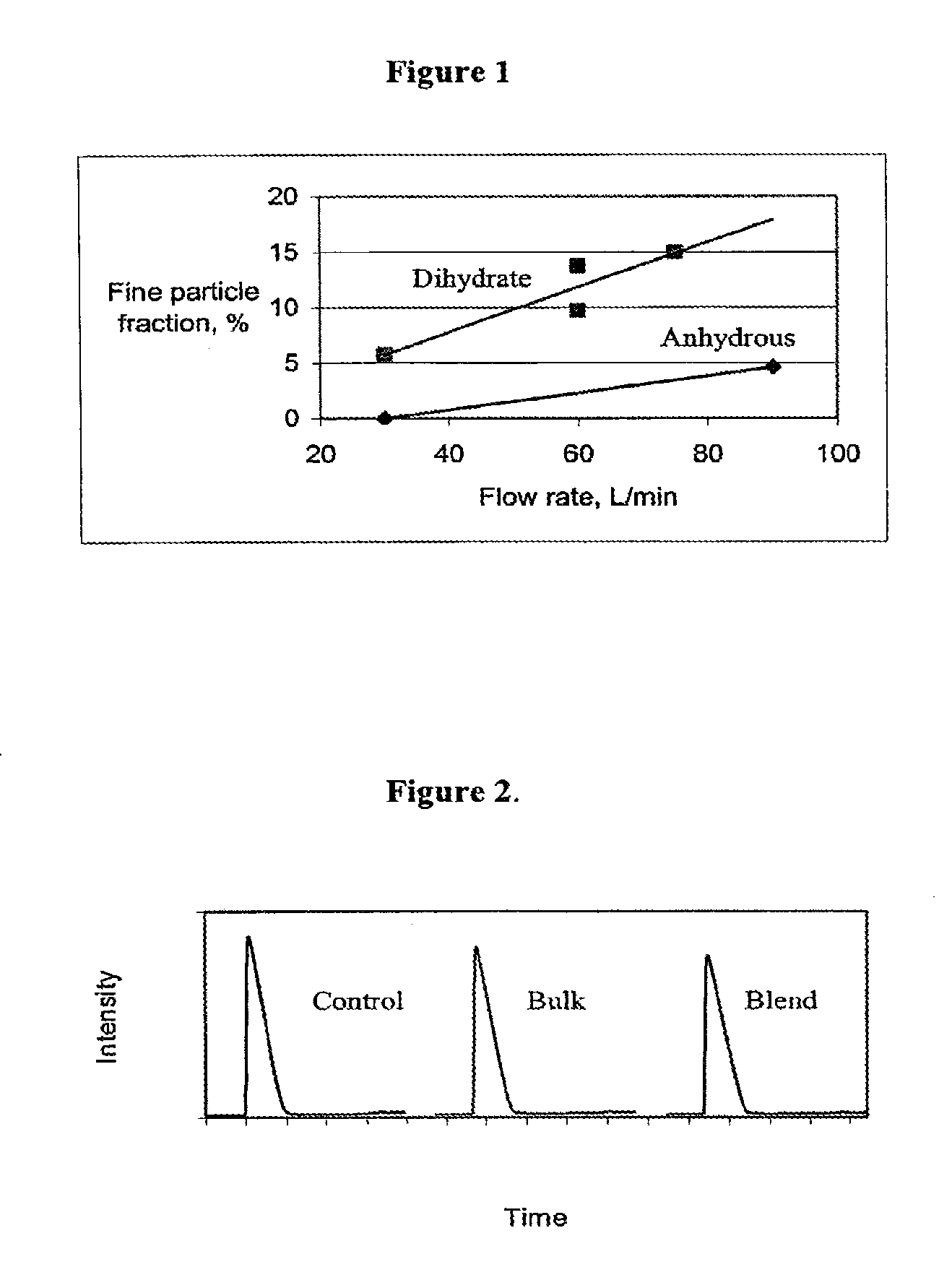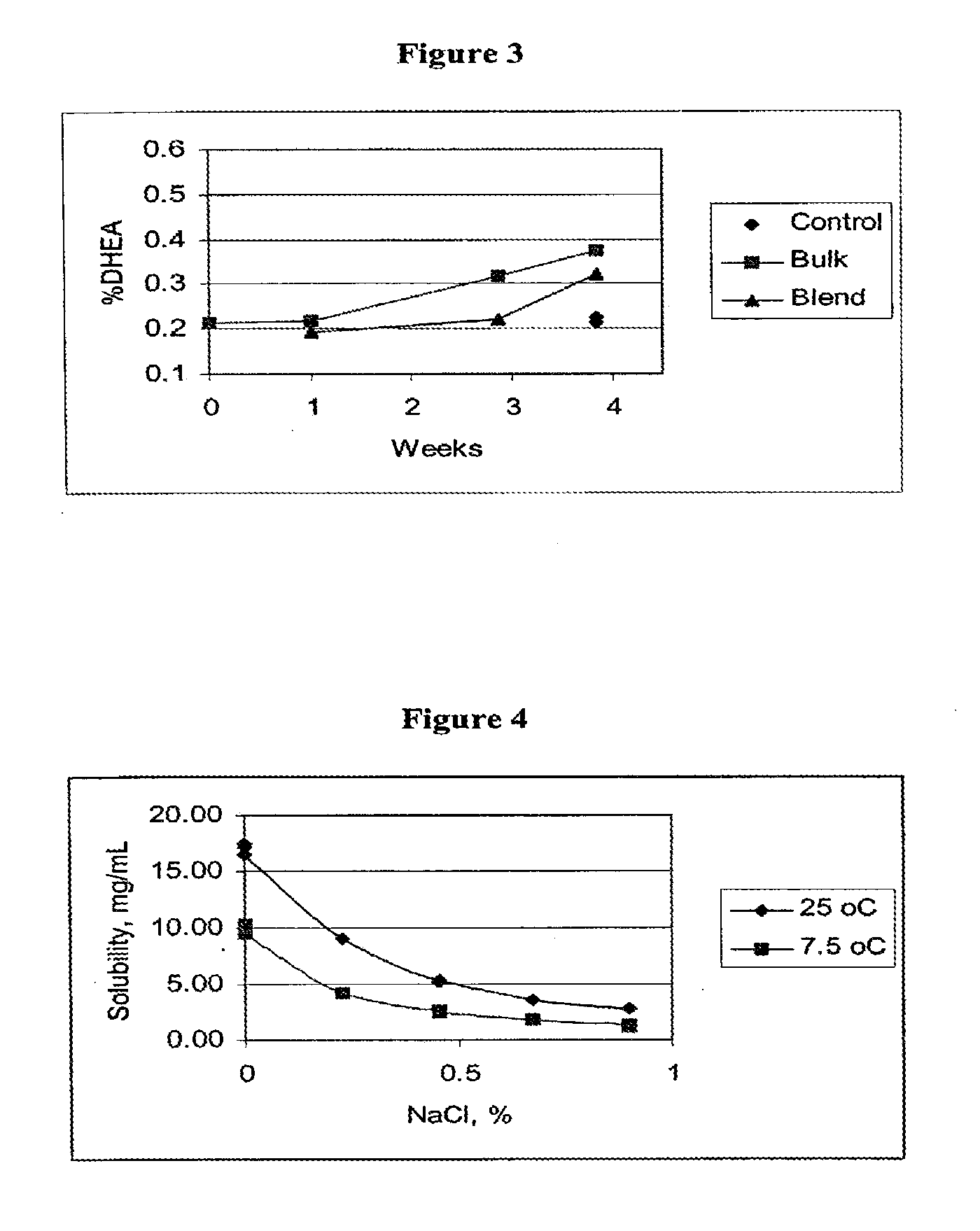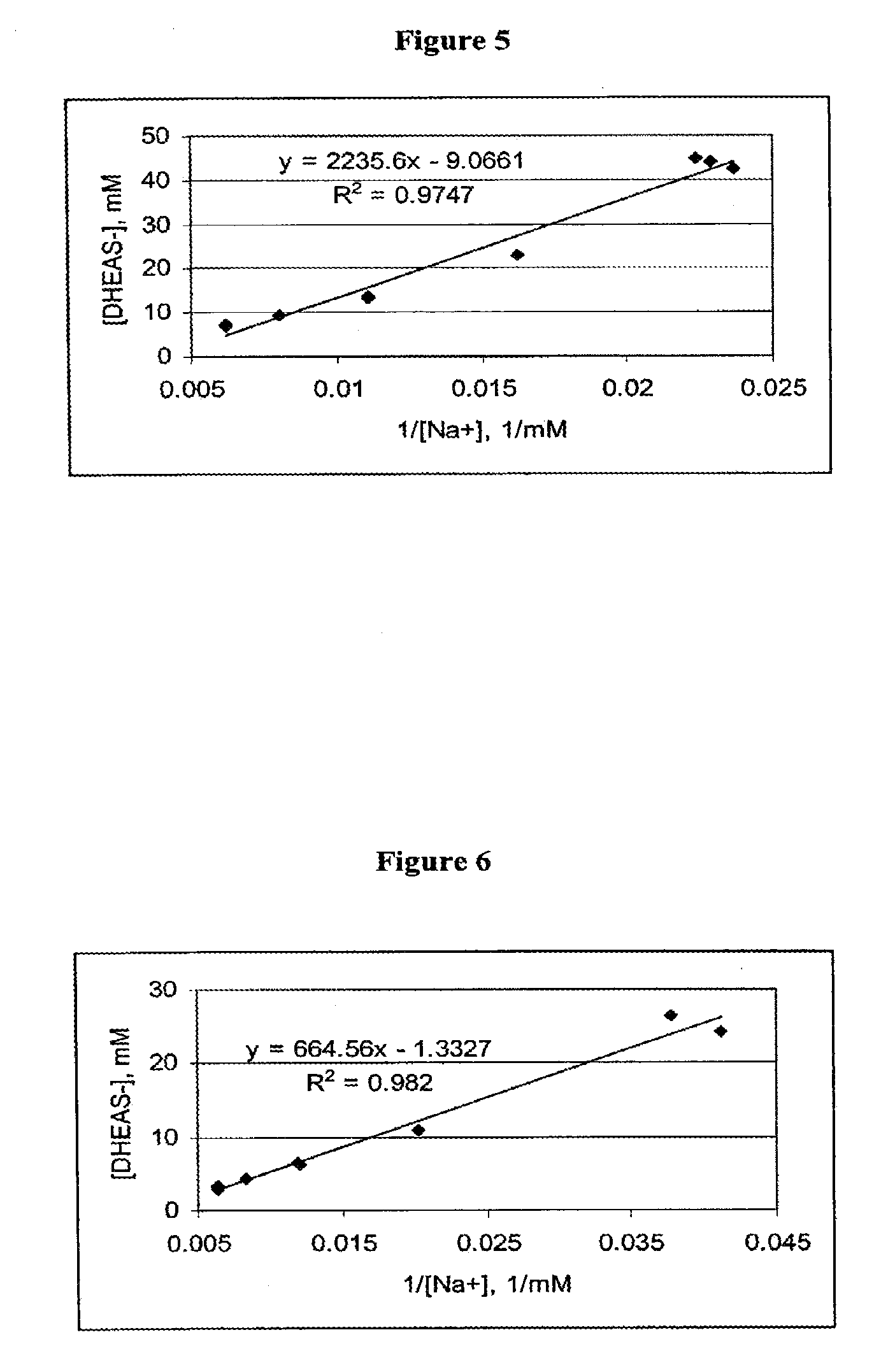Dehydroepiandrosterone sulfate dihydrate inhalation compositions and methods
a technology of dehydroepiandrosterone and dihydrate, which is applied in the direction of aerosol delivery, immunological disorders, antibacterial agents, etc., can solve the problems of collapse of airway walls, poor understanding of asthma underlying causes, and the most of the asthma drugs available for the treatment of asthma are, more importantly, barely effective in a small number of patients, so as to reduce or deplete adenosine levels.
- Summary
- Abstract
- Description
- Claims
- Application Information
AI Technical Summary
Benefits of technology
Problems solved by technology
Method used
Image
Examples
example 1
Airjet Milling of Anhydrous DHEA-S & Determination of Respirable Dose
[0126]DHEA-S is evaluated as a once-per-day asthma therapy alternative to inhaled corticosteroid treatment that is not expected to share the safety concerns associated with that class. The solid-state stability of DHEA-S, sodium dehydroepiandrostenone sulfate (NaDHEA-S) or sodium prasterone sulfate, has been studied for both bulk and milled material (Nakagawa, H., Yoshiteru, T., and Fujimoto, Y. (1981) Chem. Pharm. Bull. 29(5) 1466-1469; Nakagawa, H., Yoshiteru, T., and Sugimoto, I. (1982) Chem. Pharm. Bull. 30(1) 242-248). DHEA-S is most stable and crystalline as the dihydrate form. The DHEA-S anhydrous form has low crystallinity and is very hygroscopic. The DHEA-S anhydrous form is stable as long as it picks up no water on storage. Keeping a partially crystalline material free of moisture requires specialized manufacturing and packing technology. For a robust product, minimizing sensitivity to moisture is essenti...
example 2
Spray Drying of Anhydrous DHEA Sulfate & Determination of Respirable Dose
(1) Micronization of the Drug
[0132]1.5 g of anhydrous DHEA sulfate were dissolved to 100 ml of 50% ethanol:water to produce a 1.5% solution. The solution was spray-dried with a B-191 Mini Spray-Drier (Buchi, Flawil, Switzerland) with an inlet temperature of 55° C., outlet temperature of 40° C., at 100% aspirator, at 10% pump, nitrogen flow at 40 mbar and spray flow at 600 units. The spray-dried product was suspended in hexane and Span85 surfactant added to reduce agglomeration. The dispersions were sonicated with cooling for 3-5 minutes for complete dispersion and the dispersed solutions tested on a Malvern Mastersizer X with a Small Volume Sampler (SVS) attachment.
[0133]The two batches of spray dried material were found to have mean particle sizes of 5.07±0.70 μm and 6.66±0.91 μm. Visual examination by light microscope of the dispersions of each batch confirmed that spray drying produced small respirable size ...
example 3
Air Jet Milling of DHEA-S Dihydrate (DHEA-S.2H2O) & Determination of Respirable Dose
[0136](1) Recrystallization of DHEA-S dihydrate. Anhydrous DHEA-S is dissolved in a boiling mixture of 90% ethanol / water. This solution is rapidly chilled in a dry ice / methanol bath to recrystallize the DHEA-S. The crystals are filtered, washed twice with cold ethanol, than placed in a vacuum desiccator at room temperature for a total of 36 h. During the drying process, the material is periodically mixed with a spatula to break large agglomerates. After drying, the material is passed through a 500 μm sieve.
(2) Micronization and physiochemical testing. DHEA-S dihydrate is micronized with nitrogen gas in a jet mill at a venturi pressure of 40 PSI, a mill pressure of 80 PSI, feed setting of 25 and a product feed rate of about 120 to 175 g / hour. Surface area is determined using five point BET analyses are performed with nitrogen as the adsorbing gas (P / Po=0.05 to 0.30) using a Micromeritics TriStar surfa...
PUM
| Property | Measurement | Unit |
|---|---|---|
| Fraction | aaaaa | aaaaa |
| Molar density | aaaaa | aaaaa |
| Density | aaaaa | aaaaa |
Abstract
Description
Claims
Application Information
 Login to View More
Login to View More - R&D
- Intellectual Property
- Life Sciences
- Materials
- Tech Scout
- Unparalleled Data Quality
- Higher Quality Content
- 60% Fewer Hallucinations
Browse by: Latest US Patents, China's latest patents, Technical Efficacy Thesaurus, Application Domain, Technology Topic, Popular Technical Reports.
© 2025 PatSnap. All rights reserved.Legal|Privacy policy|Modern Slavery Act Transparency Statement|Sitemap|About US| Contact US: help@patsnap.com



